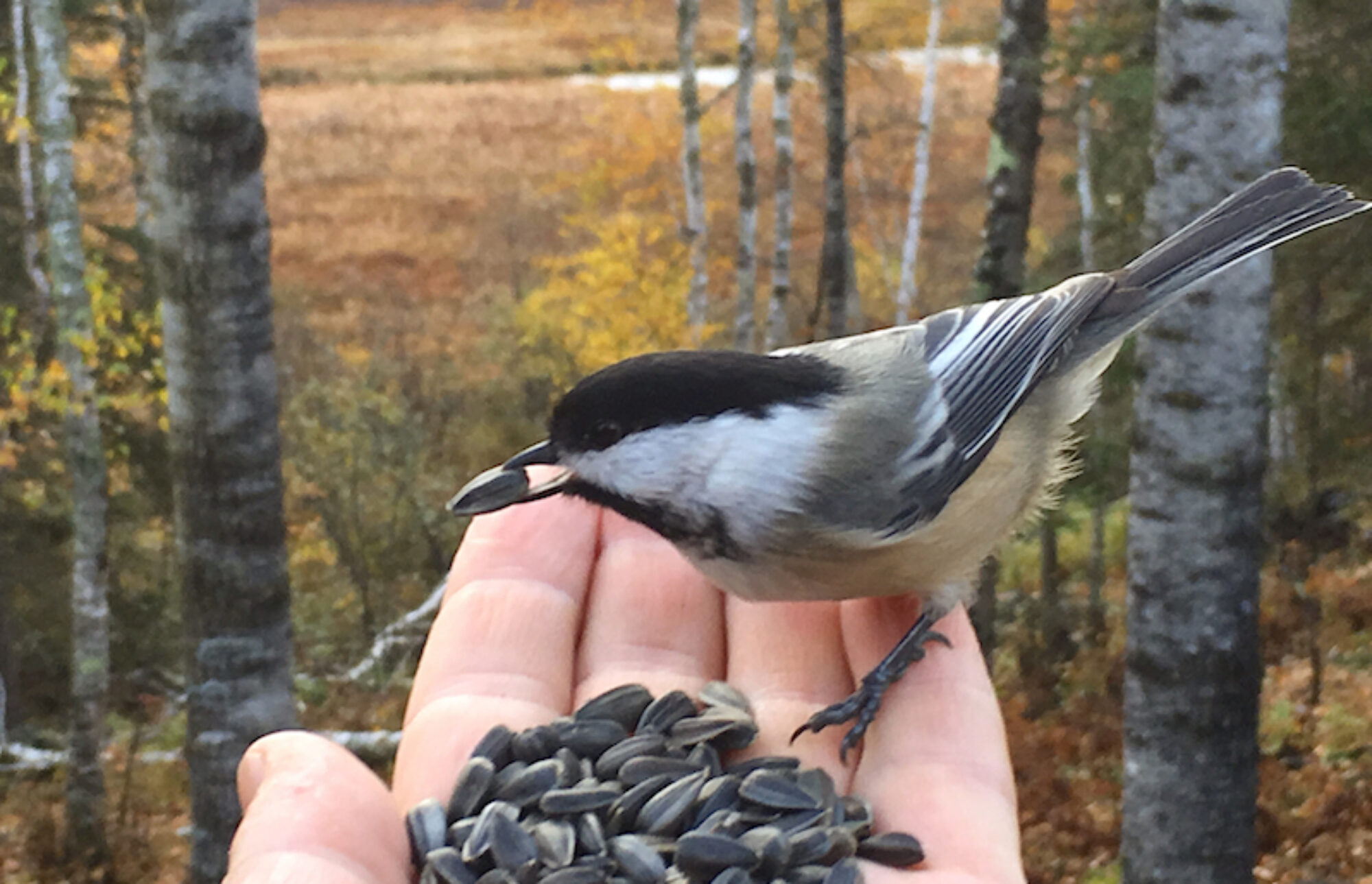Enhanced by a seemingly rare instance of full bright sunlight, the distinctive field markings of numerous small birds flitting about under shadowy trees, in the hedge and on some open areas of the yard made their identification an easy undertaking: white-crowned and yellow-throated sparrows, dark-eyed juncos, black-capped chickadees and house finches.
These were the sorts of birds one would expect to be seen in central Iowa at this time of year, but it’s always interesting and fun for those who enjoy backyard birding to confirm their suspicions or what they’re hearing from other birders. In this case, there was nothing out of the ordinary.
Sparrows and finches are among the last and most lingering of small songbirds to make their way south in large flocks from breeding territories farther north during the latter stages of the fall migration. Many will hang around as long as they can find adequate food sources with some even spending the duration of the winter here.
Others, such as white-throated and white-crowned sparrows, will continue farther south in search of suitable habitat and food sources that will get them through the coming months before they make their return journey north to summer breeding grounds.
Finches, whether they be purple, gold or house, and pine siskins, another member of the finch family, are common migrators to the region that overwinter here and assimilate into the Mid-Iowa landscape, joining existing flocks of local finches, primarily gold and house, that are their cousins and year-round residents.
Juncos, a member of the sparrow family, mix with other non-migrating local birds, such as chickadees, white-breasted nuthatches, and downy, hairy and red-bellied woodpeckers, as they hunker down and scratch out an existence, waiting out the cold and dark of winter. These are the birds most casual backyard birders are seeing at their feeders now, and they’re the same ones they’ll be watching for the next five to six months.
However, there could be other late migrators to mix in with the regular assortment of wintering backyard birds, and sharp-eyed birders who spot these irregular visitors will be happy and amused to see them. Brown creepers are small unassuming birds that are well camouflaged and often go unnoticed amid the flash and panache offered by other more vivacious visitors to backyard feeding stations.
Brown creepers are recognizable by their habit of slowly spiraling up a tree in search of invertebrates and, after reaching the upper branches, flying back to the tree’s base and starting its search all over. Brown creepers will repeat the process over and over until they satiate themselves or until they decide to move on to a different tree, where they continue their foraging.
Another occasional backyard visitor that is similar in size to the brown creeper is the red-breasted nuthatch, a small relative of the white-breasted nuthatch and a real acrobat when it comes to its feeding antics. While brown creepers climb from the base of the tree upward, red-breasted nuthatches scurry down trees headfirst in their search for invertebrates. They’ll also visit feeders and, like most backyard feeders, enjoy black-oil sunflower seeds and will cache the ones they don’t immediately consume in crevices of tree bark. But their real entertainment value for viewers is in watching them race down trees.
Other irruptive species that are already being reported in various places across the state this fall include large numbers of pine siskins and red crossbills (another member of the finch family), as well as smaller numbers of common redpolls and white-winged crossbills (two more members of the finch family.)
The crossbills, according to Doug Harr, president and chief operating officer of Iowa Audubon and the former coordinator of the Iowa Department of Natural Resource Wildlife Diversity Program, “are probably from the Rocky Mountains, where pine cone crops are low and forest fires have destroyed so much food habitat this year.”
Harr, who lives in Ogden, said this may be the biggest year for red crossbills Iowa has seen in decades.
Both crossbill species “might be seen at almost any big cemetery with lots of pines and spruces,” he said.
The Nevada Cemetery, for one, has been a popular destination for central Iowa birders wanting a glimpse at these rare visitors.
Once one gets out of a suburban or urban backyard setting, the possibilities to see a number of other winter visitors that might not show up in your backyard increases significantly. Northern saw-whet, short-eared and even snowy owls have made their way into Iowa already, as have rough-legged hawks and migrating bald eagles.
A few Lapland longspurs and snow buntings have been reported, as well, said Eric Ollie, president of the local Big Bluestem Audubon Society group, but large numbers of those open-field birds, which breed in the Arctic, have yet to make their main push into the state.
Other visitors that could show up in your backyard include American tree and Harris’s sparrows.
While ducks, geese, loons and swans are only just now moving across the continent in large numbers, the bulk of the songbird migration is over. It’s time, therefore, for those backyard birders among us to load up on birdseed and settle into a comfortable seat with a good field guide, a set of binoculars and an earnest desire to be warmed by some of winter’s most colorful and talented entertainers.
Todd Burras can be reached at outdoorstoddburras@gmail.com.
